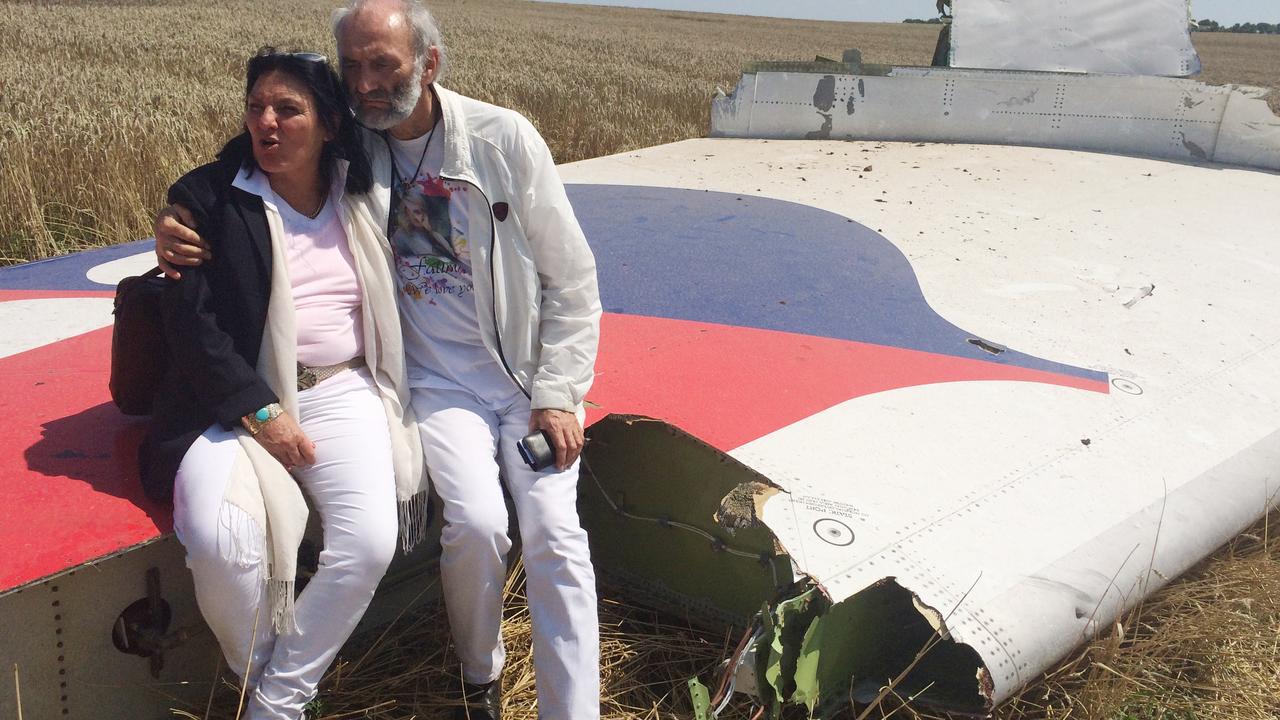Ukraine villager ponders identity of MH17 victim who fell through roof
SHE knows her only as “Number 26”, but villager Inna Tipunova believes she will forever be linked to the MH17 victim.

SHE just knows her as “Number 26” but Inna Tipunova believes their lives will forever be intertwined.
“I want to know about her, who she was, her name, these things, but they just call her ‘Number 26’,” the 60-year-old said as she stood inside her son’s granny flat at the side of her home, looking up to the roof and into the deep blue summer sky above.
“The police tell me this — ‘we call her Number 26’ — before they put all of her in a black bag and carried her away. It took them a while to find all of her. It was very sad.”
Ms Tipunova was up the road visiting a friend when her 27-year-old son Alexander rang her and said that a bomb had fallen through the roof and into their home in a rural village outside Donetsk in eastern Ukraine.
He was afraid the bomb might go off, but the reality would turn out to be worse than his fears. “26” was a passenger on-board Malaysian Airlines Flight MH17 when it was downed over eastern Ukraine, and her body dropped out of the sky and through the roof of Ms Tipunova’s small whitewashed home unit in the village of Rassypnovye. When Ms Tipunova returned home she saw blood and “other things” smeared across the walls.
IN DEPTH: More stories on MH17
“She was only half a person but she was a woman, maybe in her 50s,’’ Ms Tipunova said. “But she was here with us in the house. We know the situation of war and are so aware of bombs dropping and we thought it was a bomb. But it was worse. I know this is all part of war, but it is very sad.”
The body was taken away, but not for a while, which added to Ms Tipunova’s distress. Lime powder is now scattered on the floor where there were pools of blood, but the stench of death remains, as do blood-spattered pots and pans.
“Tell everyone how it is truthfully, everyone must know,” she says.
Everyone in the rural village has a similar story, some even worse than Ms Tipunova’s.
But they also wanted to share their stories with The Australian.
No-one had spoken to them about their distress - not even the authorities - and they were pleased to share summer fruits and tales of horror, some just too graphic to print.
It was a quiet hamlet of little more than two dozen or so farm houses early last week, but by last Thursday it had become the village of the dead.
There’s Ms Tipunova’s elderly neighbour, local farmer Sascha. He too had a passenger from the Malaysian Airlines flight drop through his roof.
Tatiana said it was “raining humans” as she tended the fields and now can’t erase the scene from her mind. Nor can Liliya Alexandrovnr Kuhta, 43, who, along with her daughter, saw bodies and debris fall across the village. In all, 39 victims of the Boeing 777 flight landed in the village.
“Everyone here cried for two days,’’ Tatiana said. “Cried and cried and cried, the crying was non-stop, how could you not? But then we knew what we had to do.
“We lined up shoulder-to shoulder with the local coal pit workers and walked through into the fields of sun flowers to find these people. They deserved respect and we went to get them.”
The coal pit workers also yesterday walked through large wheat belts looking for bodies.
Liliya pointed out where two bodies were immediately found in her village yesterday, then walked through the village’s three roads, then continues pointing out to the left and then the right and then the roof of a home, then a barn, then a field.
“Over there was a nine-month old baby, just nine months,” she said. “When the sun flowers fall, we will find more I know this. It’s terrible, sad. Everyone here believed it was a Ukraine fighter jet that shot the airline down. Who knows. But Australia and these countries should come here, these people need a memorial. Tell them to build a memorial here.”


